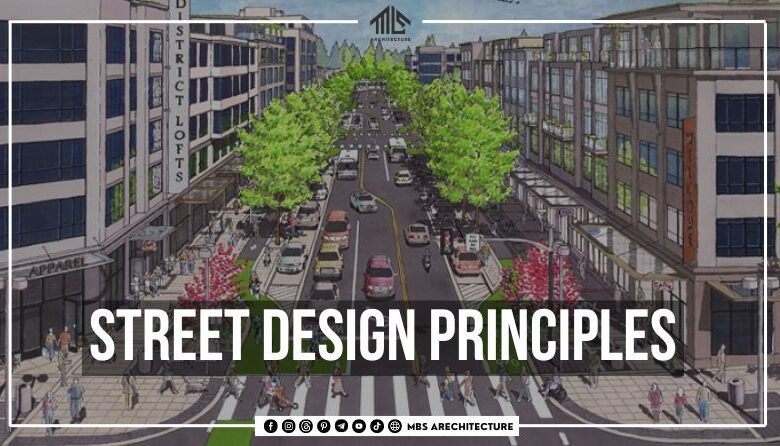
Key Principles of Effective Street Design
In this article, we will explore the key principles of effective street design and how they can contribute to creating more vibrant, livable, and inclusive urban spaces.
1. Prioritizing Safety for All Users
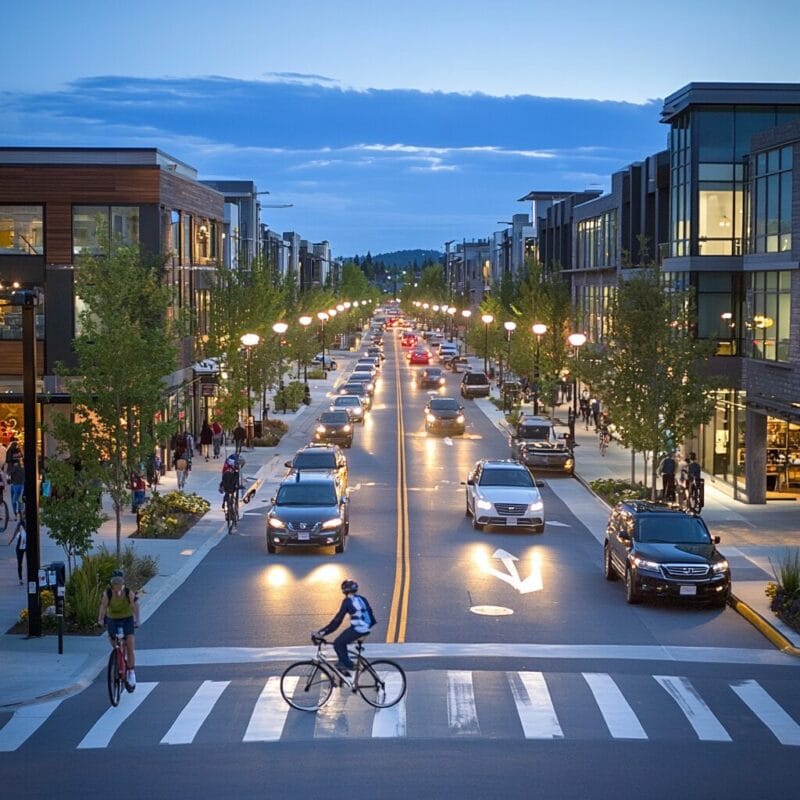
One of the foremost goals of street design is ensuring the safety of all users, whether they are pedestrians, cyclists, public transit riders, or motorists. Vision Zero, a global movement aimed at eliminating all traffic-related fatalities and severe injuries, has placed safety at the heart of street design policies in many cities around the world.
Key Safety Strategies:
- Traffic Calming Measures: Streets should incorporate traffic-calming elements like speed bumps, raised crosswalks, and roundabouts to slow down vehicles and improve pedestrian safety.
- Well-Defined Crosswalks: Visible, well-placed crosswalks make it safer for pedestrians to navigate busy intersections. These should be paired with clear signage and traffic signals.
- Protected Bike Lanes: Creating separated bike lanes helps protect cyclists from motor vehicle traffic, encouraging more people to use bicycles for transportation and reducing the risk of accidents.
- Lighting and Visibility: Adequate street lighting and unobstructed sightlines ensure that drivers, pedestrians, and cyclists can see each other clearly, especially at night or in poor weather conditions.
2. Accessibility and Inclusivity
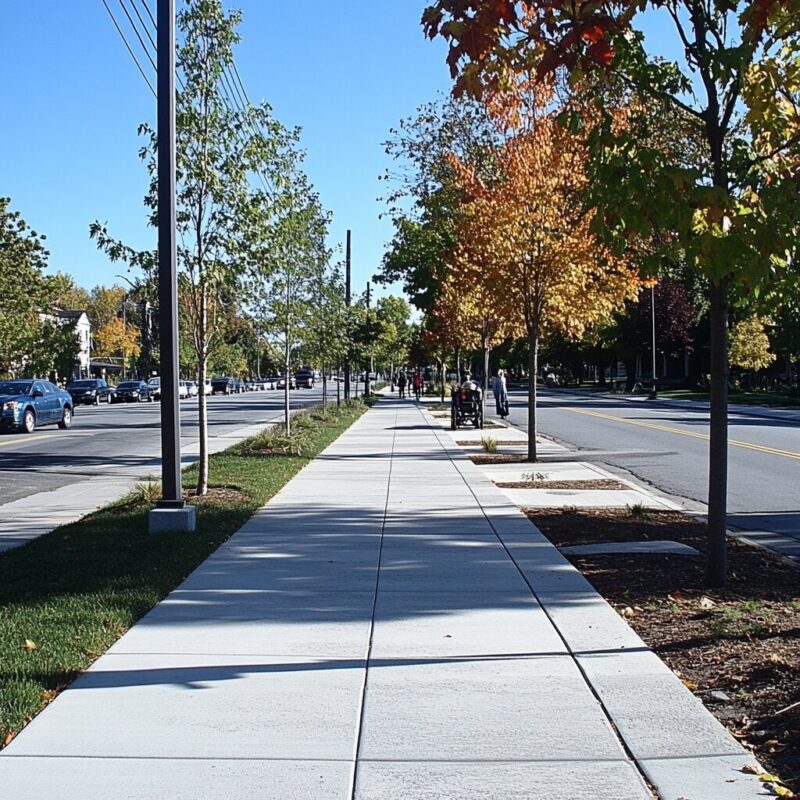
Urban streets should be designed to be inclusive and accessible to all, regardless of age, ability, or socioeconomic status. Universal design principles ensure that streets are accommodating to everyone, including people with disabilities, older adults, and children.
Key Accessibility Features:
- Wide, Smooth Sidewalks: Sidewalks should be wide enough to accommodate wheelchairs, strollers, and groups of people walking together. Smooth, non-slip surfaces make it easier for individuals with mobility impairments to navigate.
- Curb Cuts and Ramps: Curb cuts (ramps at street corners) make it easier for people using wheelchairs or strollers to transition between sidewalks and crosswalks. These should be incorporated into every intersection.
- Audible Signals: For individuals with visual impairments, crosswalks should include audible signals that indicate when it is safe to cross.
- Seating Areas: Public seating areas along streets provide resting places for older adults and individuals with limited mobility. Benches, shaded areas, and accessible restrooms enhance the comfort of urban streets.
3. Promoting Active Transportation
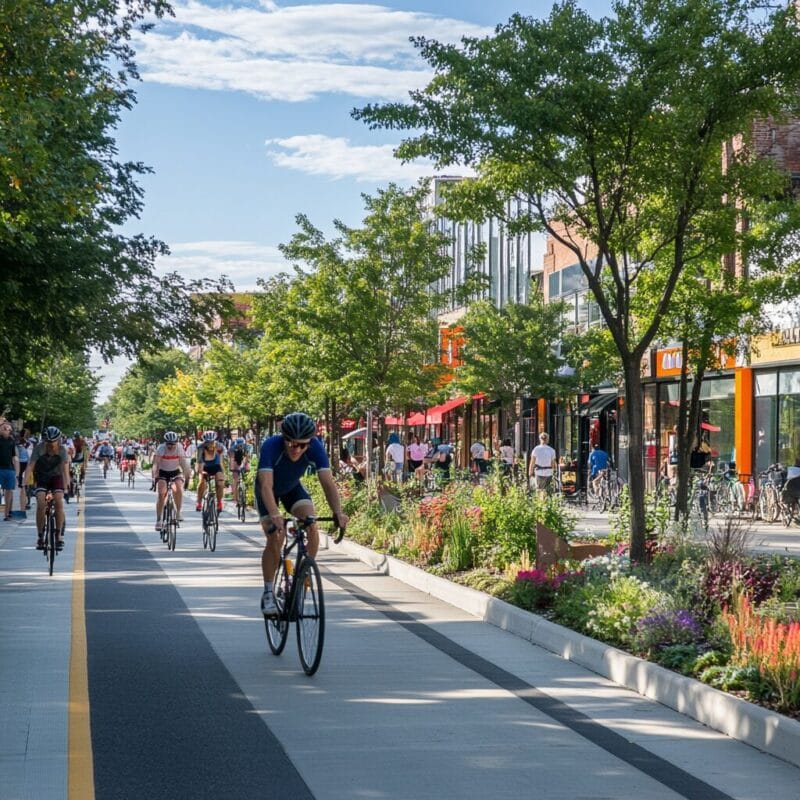
Streets designed to encourage walking, cycling, and public transportation help reduce traffic congestion, lower carbon emissions, and promote healthier lifestyles. Active transportation modes also make urban spaces more vibrant, as they encourage people to engage more with their surroundings.
Key Design Features for Active Transportation:
- Complete Streets: A complete street accommodates all forms of transportation—pedestrians, cyclists, public transit, and cars. Streets should provide dedicated spaces for each mode of travel to ensure efficiency and safety.
- Wide Bike Lanes: Dedicated bike lanes should be wide enough to accommodate cyclists comfortably, with physical barriers separating them from vehicle lanes.
- Pedestrian-Friendly Design: Streets should include wide sidewalks, pedestrian plazas, and street trees to create inviting, walkable spaces that encourage people to explore the city on foot.
- Public Transit Integration: Street design should support public transit systems by including features like bus lanes, sheltered stops, and easy access to transit stations.
4. Fostering a Sense of Place and Community
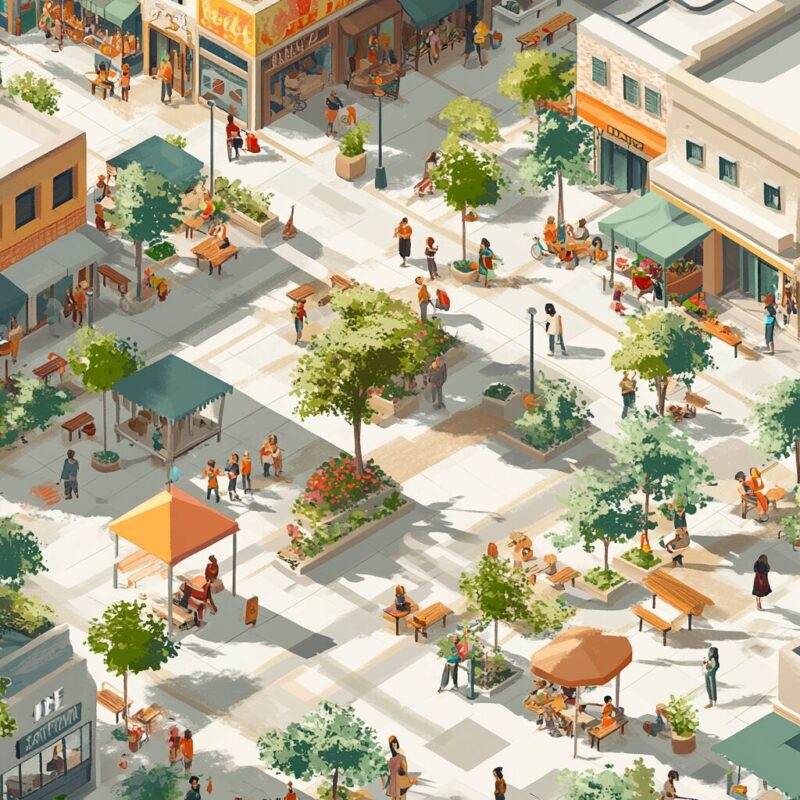
Streets are not just transportation corridors; they are social spaces where people interact, shop, dine, and engage with their community. Effective street design helps foster a sense of place by creating attractive, welcoming environments that invite people to spend time in public spaces.
Key Elements to Create a Sense of Place:
- Public Art: Murals, sculptures, and other forms of public art can create focal points that draw people in and reflect the culture and character of a neighborhood.
- Placemaking Features: Street furniture, planters, and seating areas encourage people to linger, socialize, and enjoy their surroundings.
- Greenery and Landscaping: Incorporating street trees, shrubs, and green spaces into street design can enhance the aesthetic appeal of the area, provide shade, and improve air quality.
- Flexible Spaces: Streets should include flexible, multi-use spaces that can accommodate a variety of activities, from street markets and festivals to performances and outdoor dining.
5. Sustainability and Environmental Responsibility
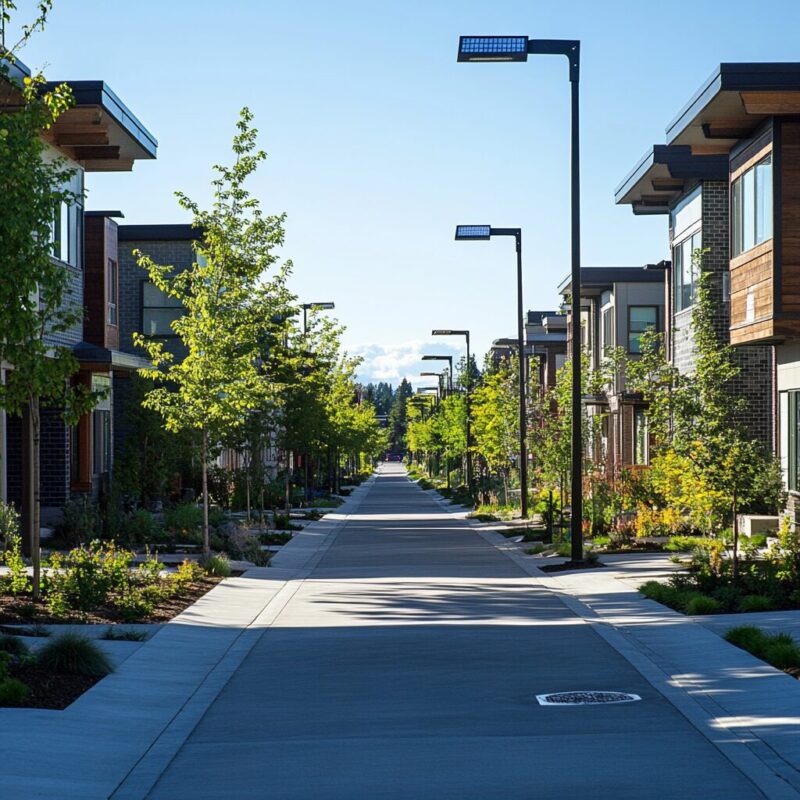
Sustainable street design is essential for reducing a city’s environmental impact and improving the resilience of urban infrastructure. Streets that prioritize sustainability can help mitigate the effects of climate change, reduce air pollution, and manage stormwater runoff.
Key Sustainable Street Design Features:
- Green Infrastructure: Integrating green infrastructure like bioswales, rain gardens, and permeable pavements helps manage stormwater, reduce flooding, and filter pollutants before they enter waterways.
- Street Trees and Urban Forests: Planting trees along streets provides shade, absorbs carbon dioxide, and reduces the heat island effect in cities. Tree-lined streets are also more aesthetically pleasing and promote pedestrian activity.
- Solar-Powered Lighting: Streetlights powered by solar panels reduce energy consumption and contribute to a city’s overall sustainability goals.
- Electric Vehicle Infrastructure: Streets designed to accommodate electric vehicle (EV) charging stations encourage the use of EVs, reducing greenhouse gas emissions and promoting cleaner air in urban areas.
Sustainable street design not only helps cities become more environmentally responsible but also enhances the quality of life for residents by improving air and water quality and providing green spaces for recreation and relaxation.
Read More About : LEED certification
6. Efficient Traffic Management
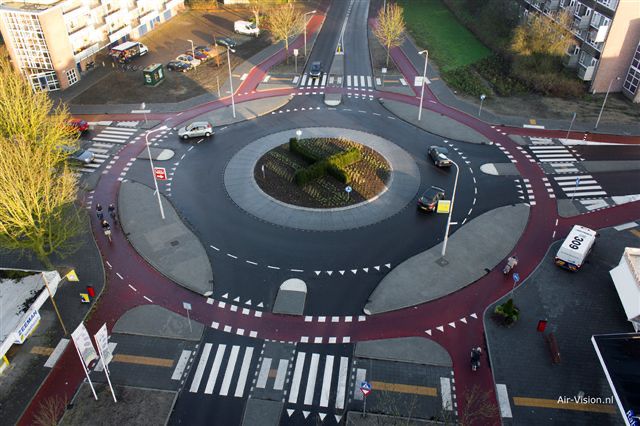
While prioritizing pedestrians, cyclists, and public transit users is essential, cities still need to accommodate vehicles in an efficient and safe manner. Effective traffic management is crucial for preventing congestion, reducing accidents, and ensuring the smooth flow of both people and goods.
Key Traffic Management Strategies:
- Roundabouts: Roundabouts can reduce vehicle speed and improve traffic flow at intersections, leading to fewer accidents and lower congestion.
- Smart Traffic Signals: Intelligent traffic systems that adjust signal timing based on real-time traffic conditions can improve traffic flow and reduce delays.
- Shared Streets: In some urban areas, shared streets (where pedestrians, cyclists, and vehicles share the same space) can create safer, more flexible environments while reducing the dominance of cars.
- Dedicated Bus Lanes: Creating bus-only lanes ensures that public transit moves efficiently, reducing the number of private vehicles on the road and lowering traffic congestion.
Efficient traffic management helps cities balance the needs of all road users while keeping urban environments functioning smoothly and safely.
7. Aesthetic and Functional Balance
The best-designed streets strike a balance between aesthetic appeal and functional efficiency. Well-designed streets should not only be beautiful and inviting but also serve their purpose effectively ,whether that’s accommodating different types of transportation, providing safe pedestrian access, or supporting vibrant commercial activity.
Key Elements for Aesthetic and Functional Balance:
- Cohesive Design Language: Consistent use of materials, colors, and forms across street furniture, signage, and lighting creates a sense of visual harmony.
- Wayfinding: Clear, intuitive signage helps people navigate urban spaces, making it easier to find public transport, points of interest, or local businesses.
- Lighting: Good lighting is both functional and aesthetic. It enhances visibility for safety while also creating an inviting atmosphere in the evenings.
- Street Proportions: Balancing the width of sidewalks, bike lanes, and vehicle lanes ensures that streets are both functional and comfortable for all users.
Balancing form and function is essential to establishing effective street design principles, contributing to a more enjoyable and functional urban experience for everyone.
Designing Streets for a Better Future
Effective street design is about creating environments that are safe, inclusive, sustainable, and vibrant. By focusing on the needs of all users pedestrians, cyclists, public transit riders, and drivers ,cities can create streets that promote active transportation, foster community, and reduce environmental impact.
As urban populations continue to grow, designing streets that prioritize people over cars, integrate green infrastructure, and foster a sense of community will be essential for creating livable, resilient, and sustainable cities. Architects, urban planners, and policymakers must work together to develop streets that enhance urban spaces for everyone, contributing to a healthier, more connected future.
